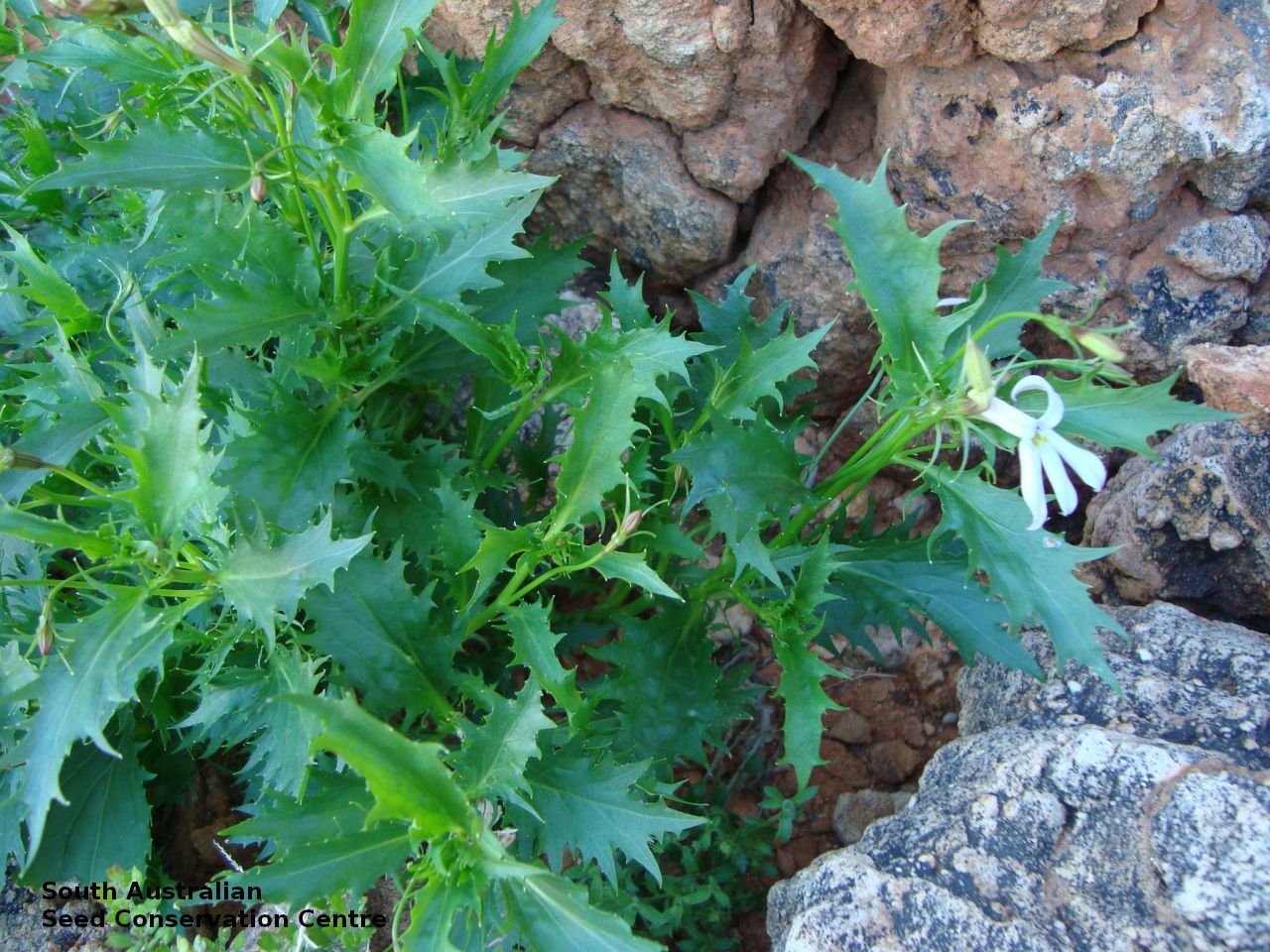
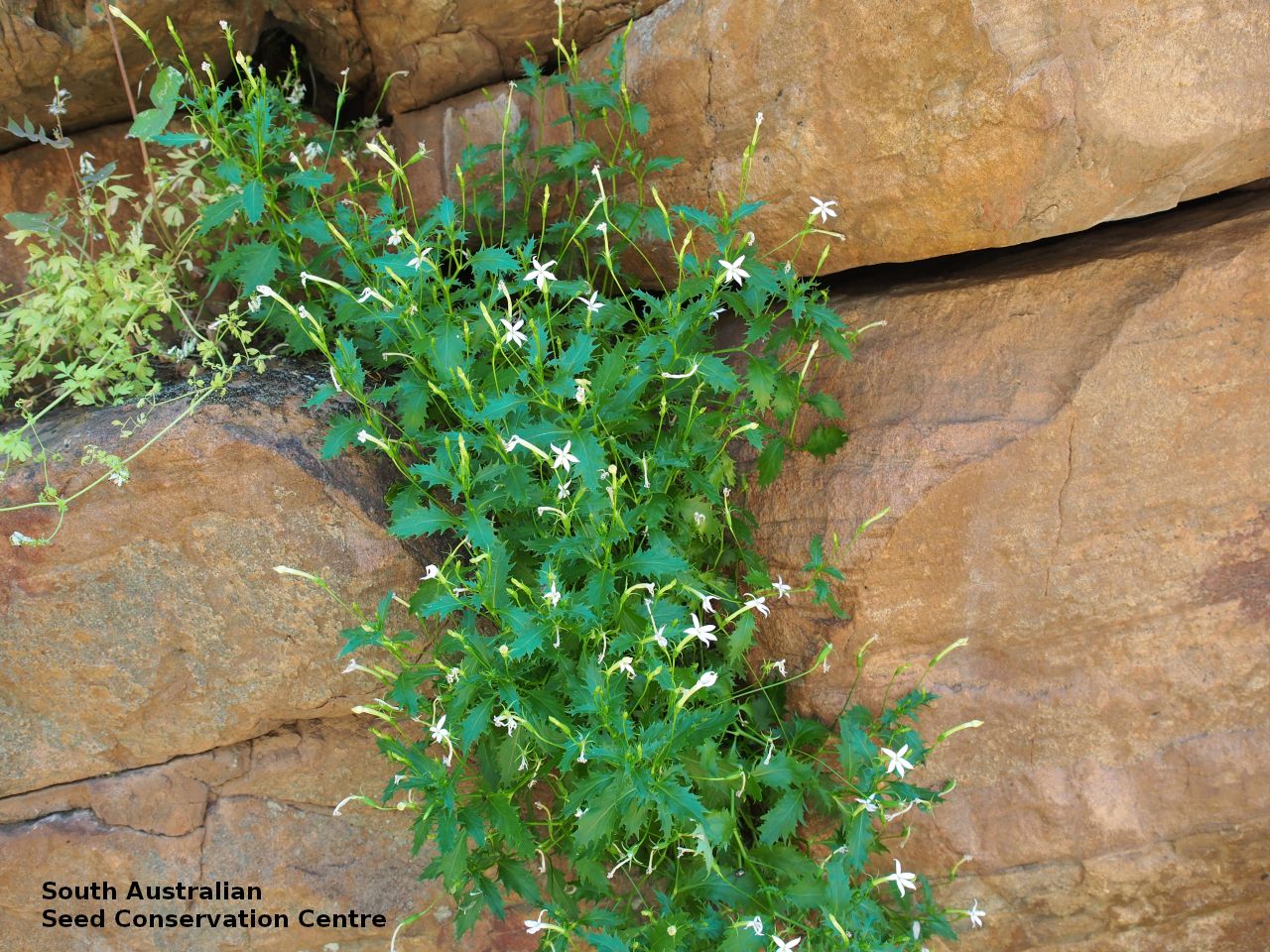
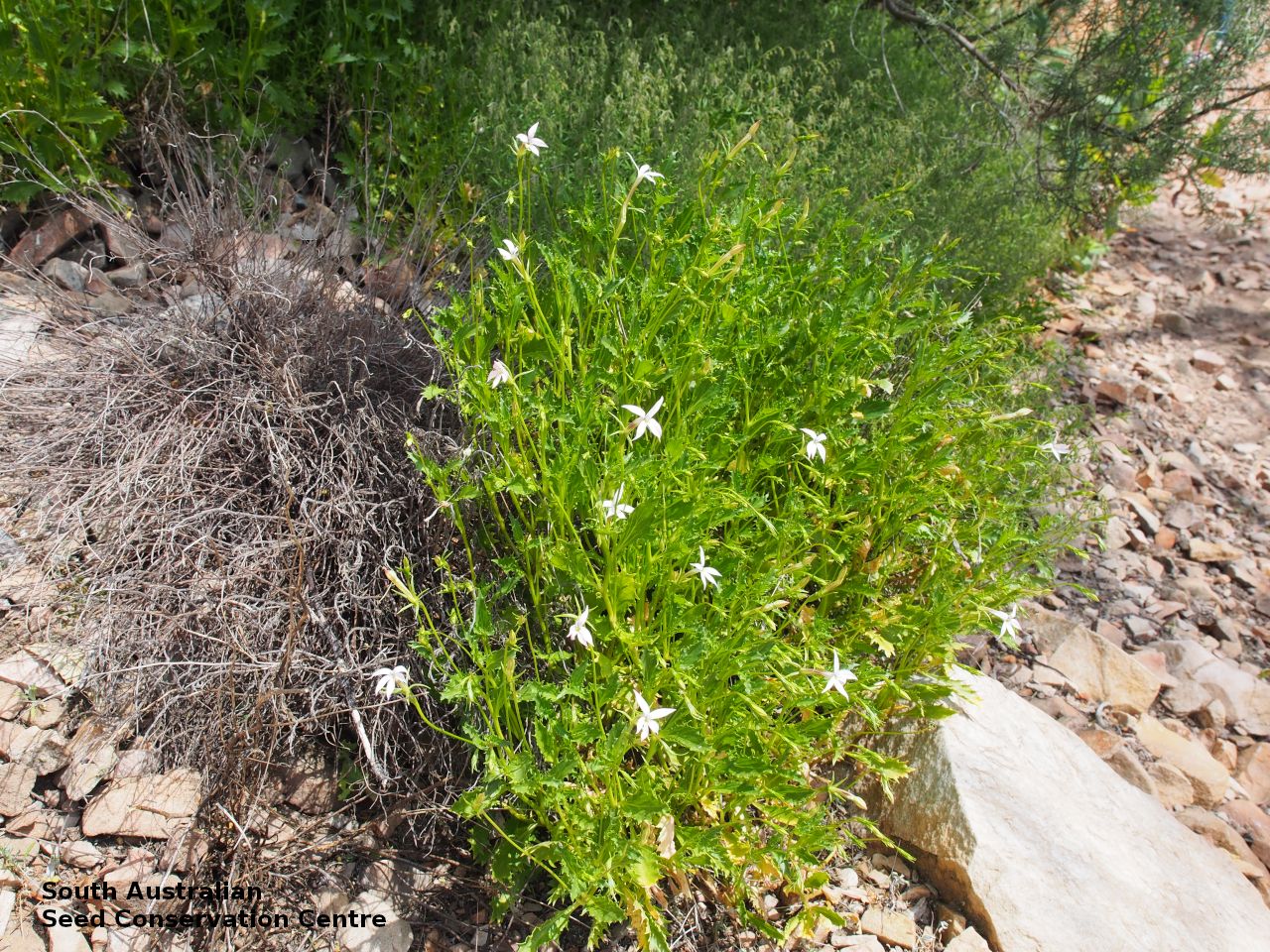
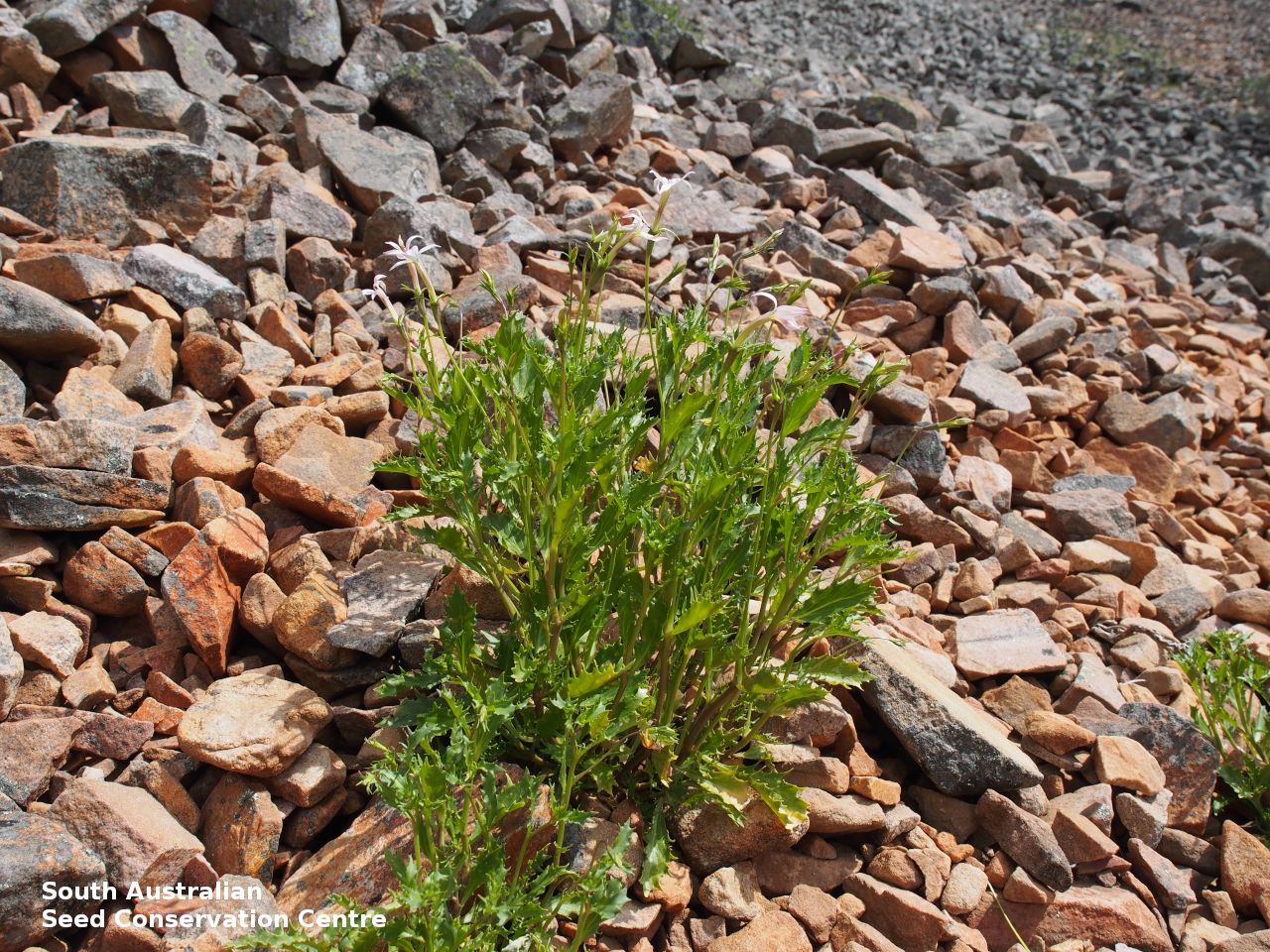
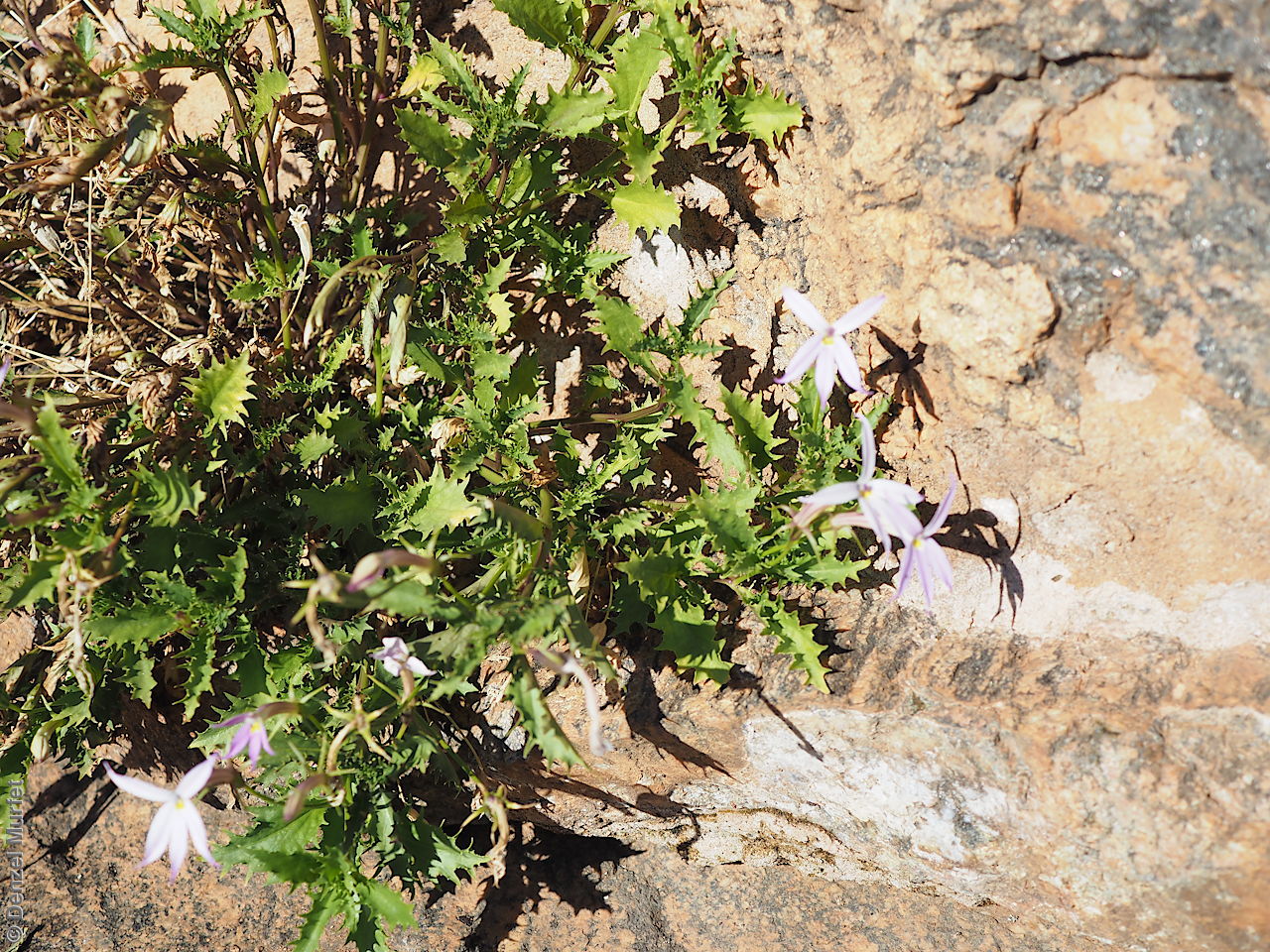
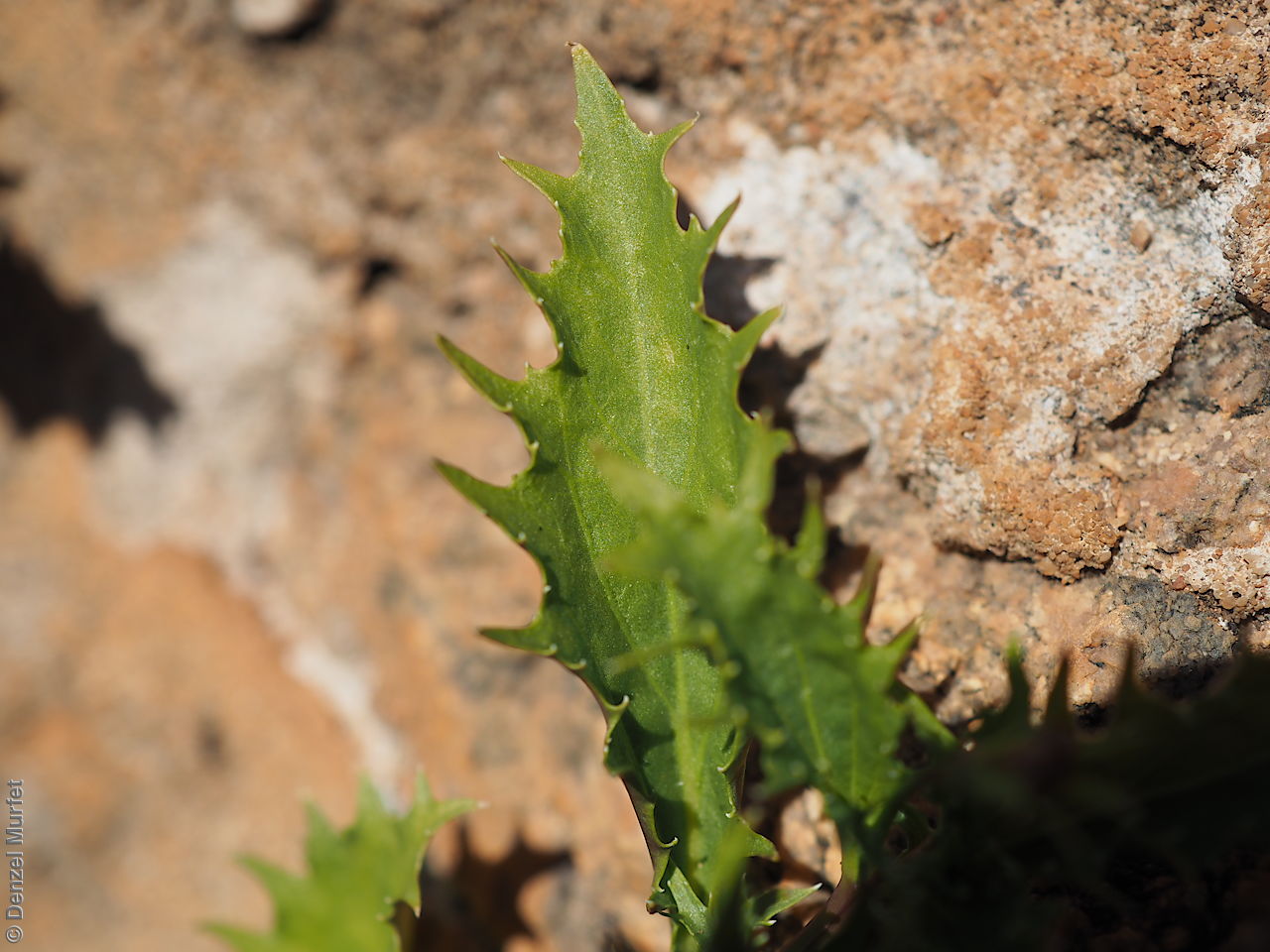

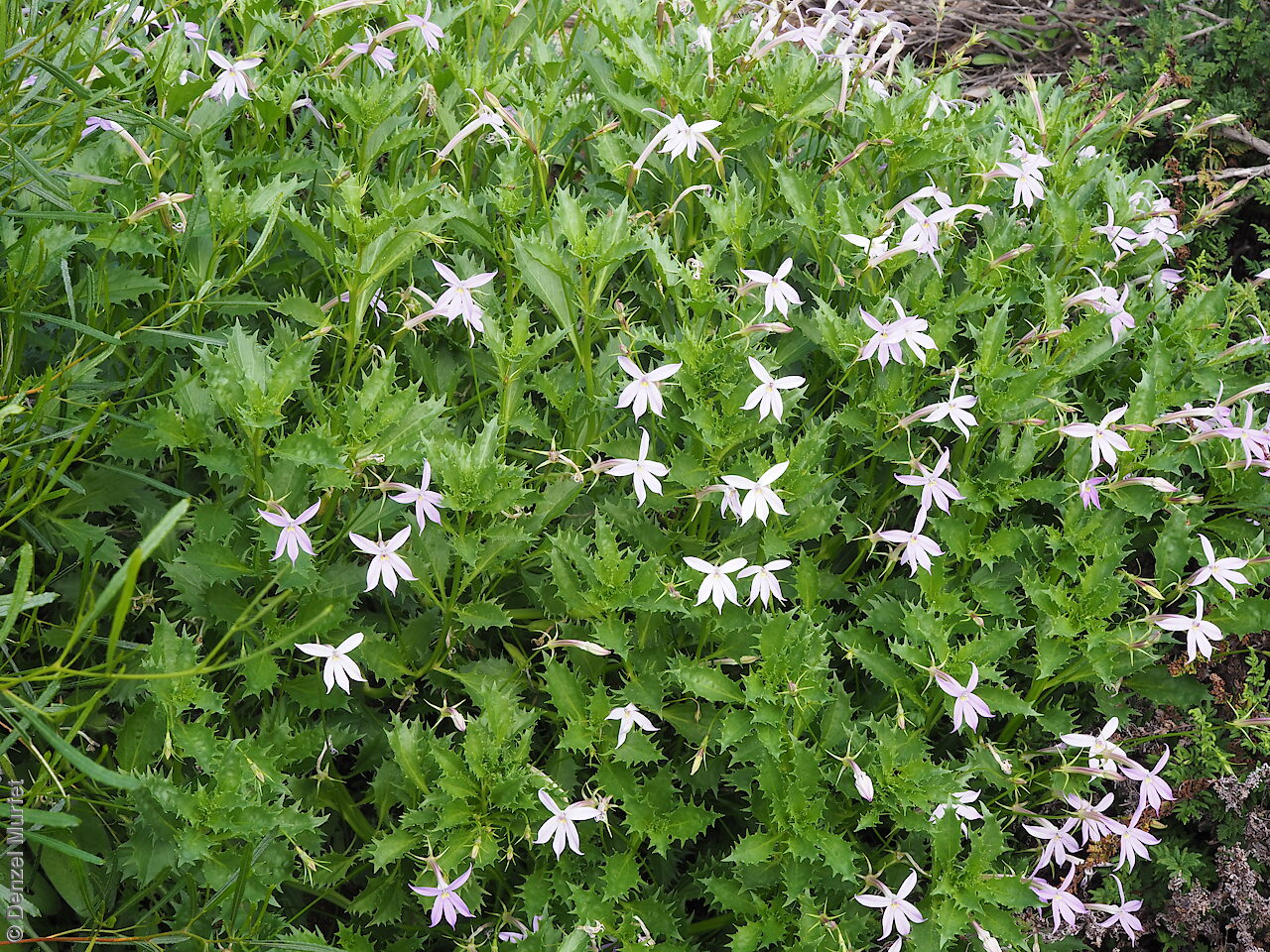
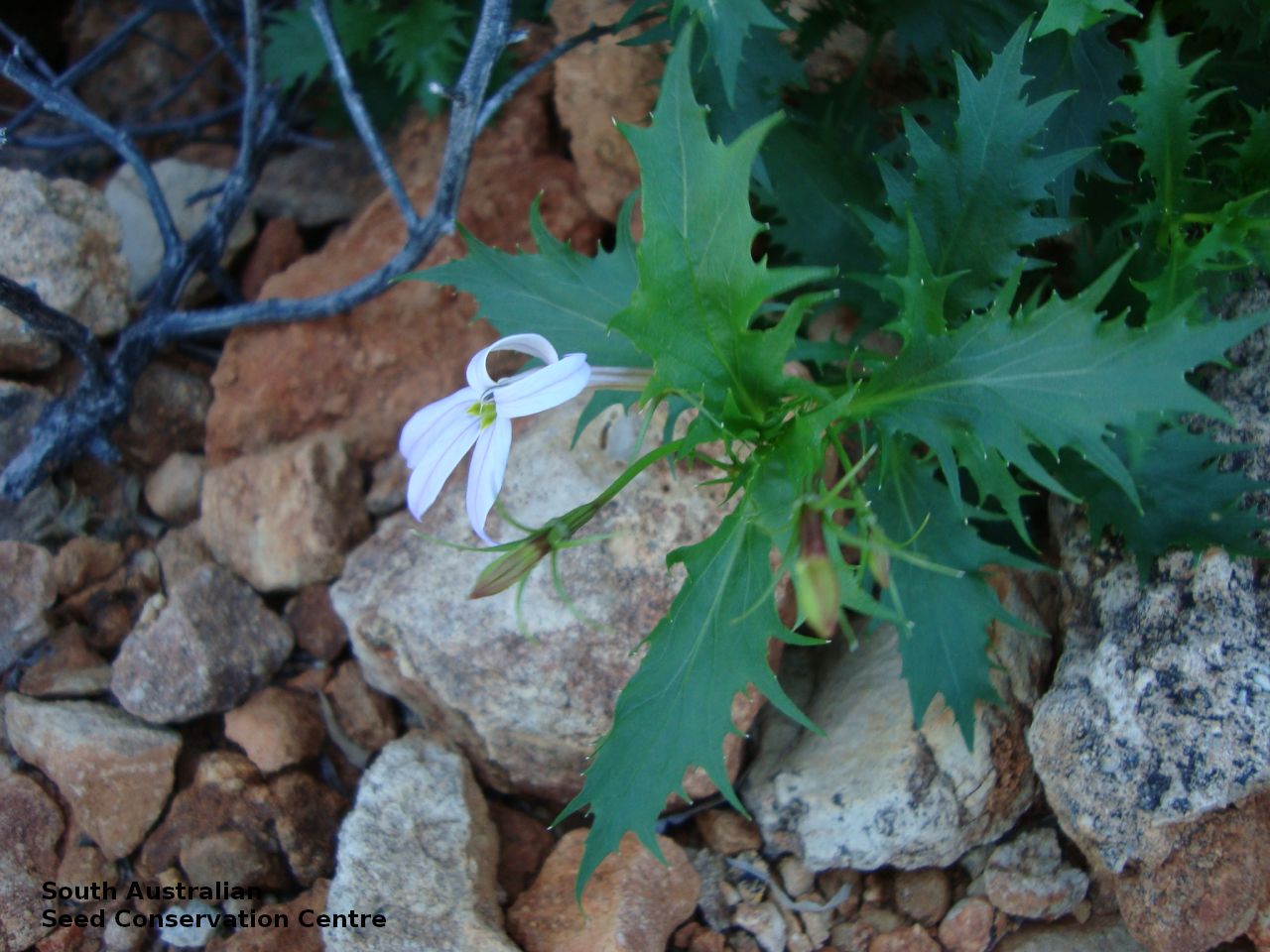
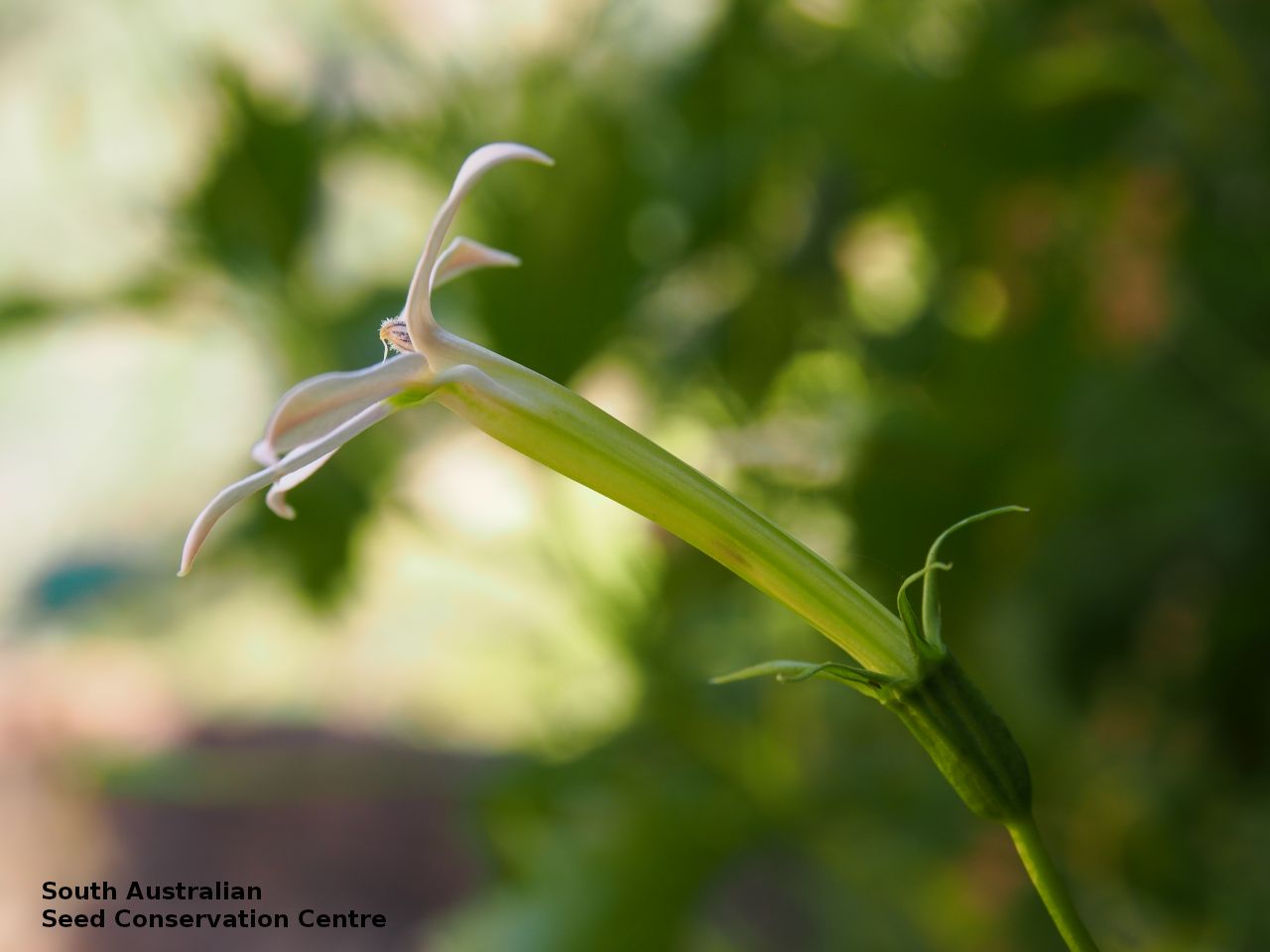
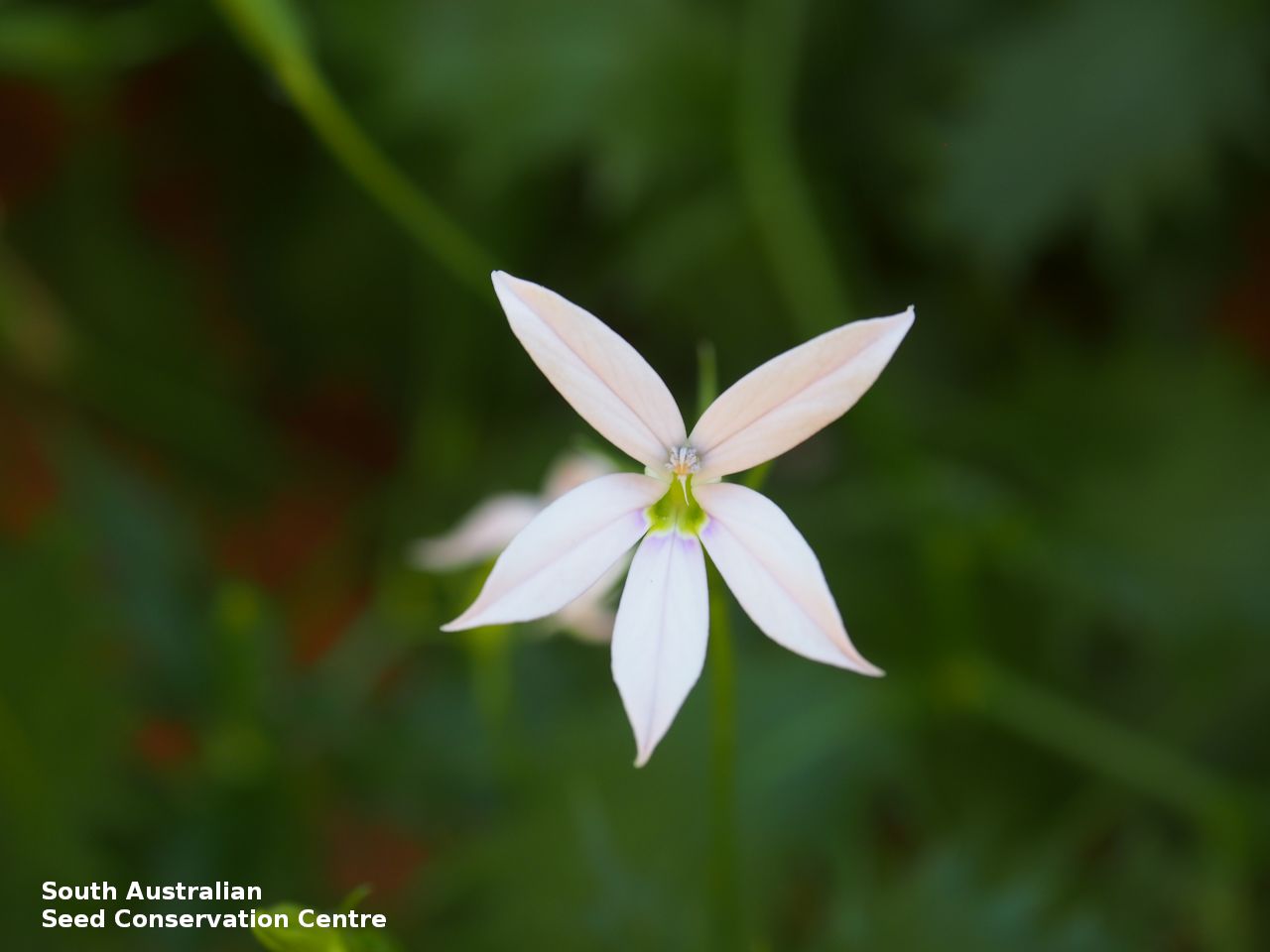
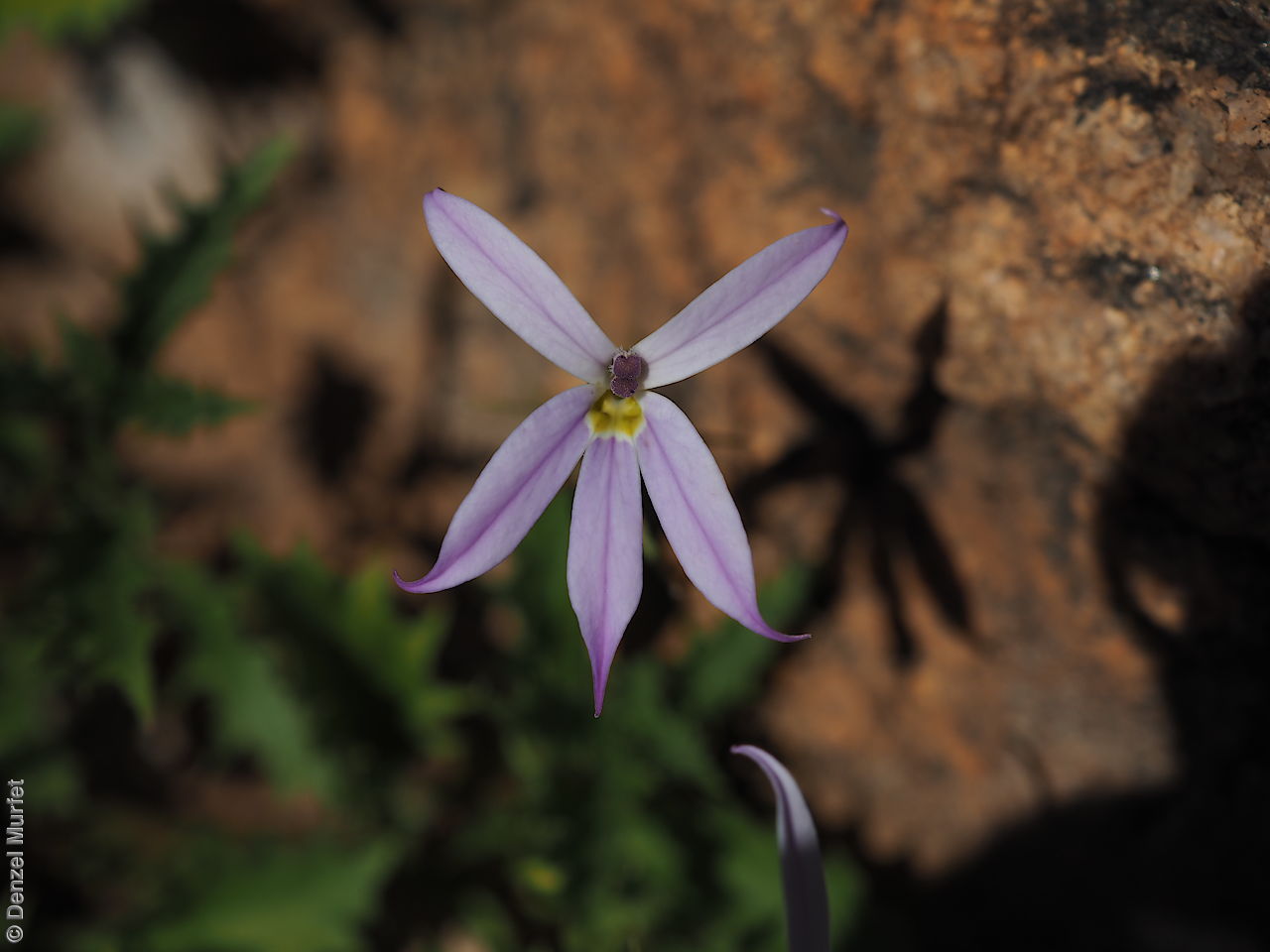
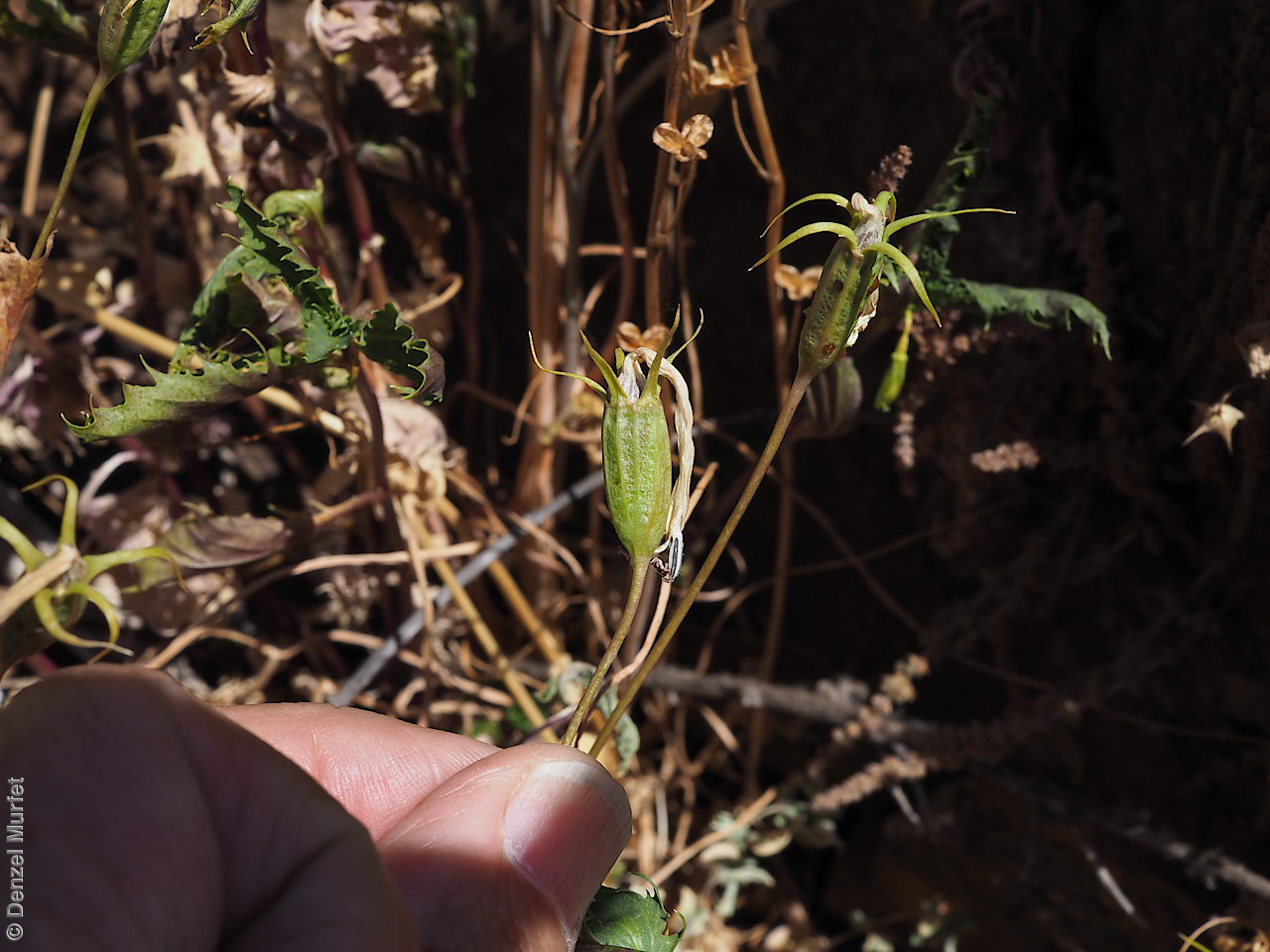
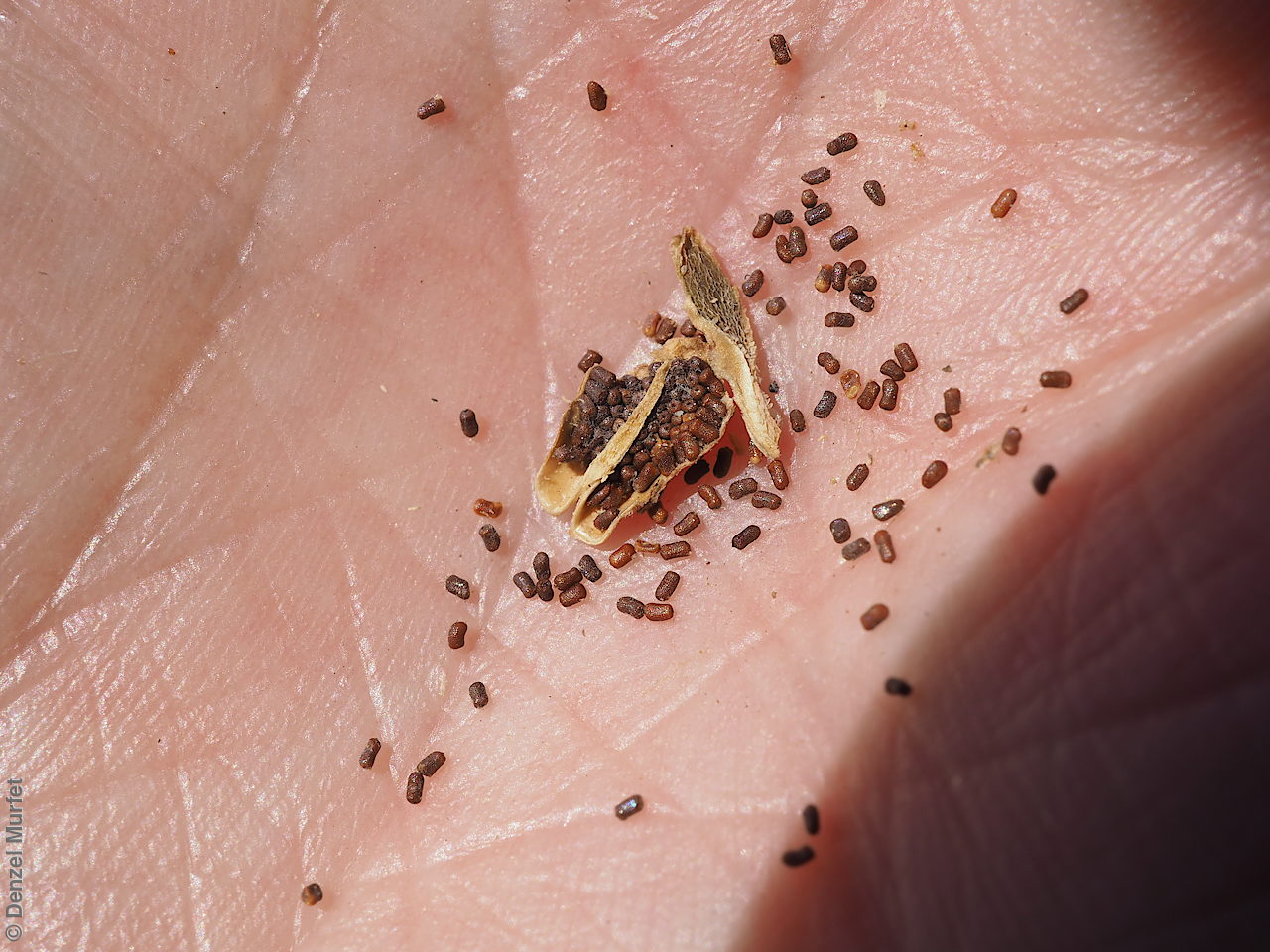

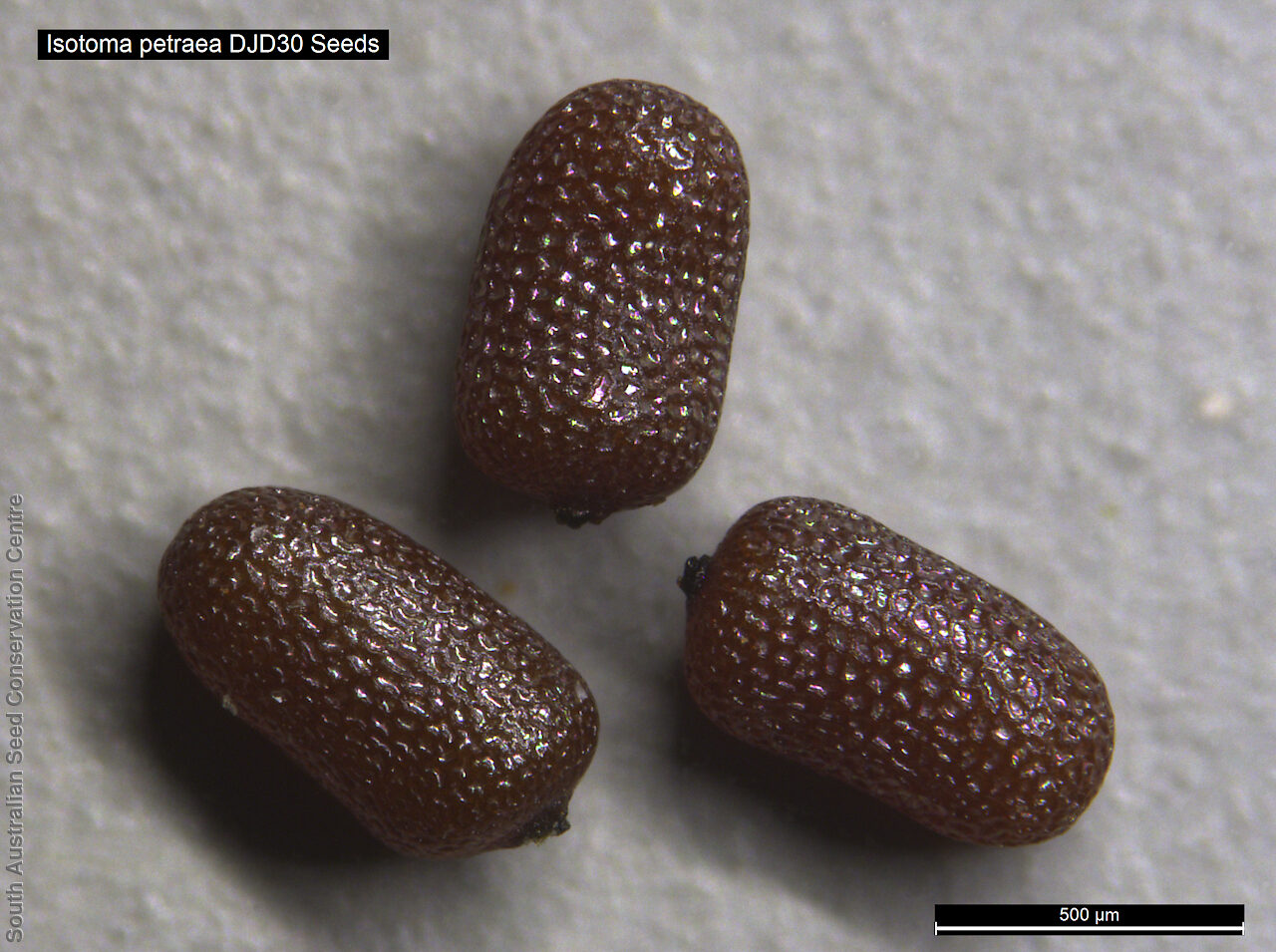
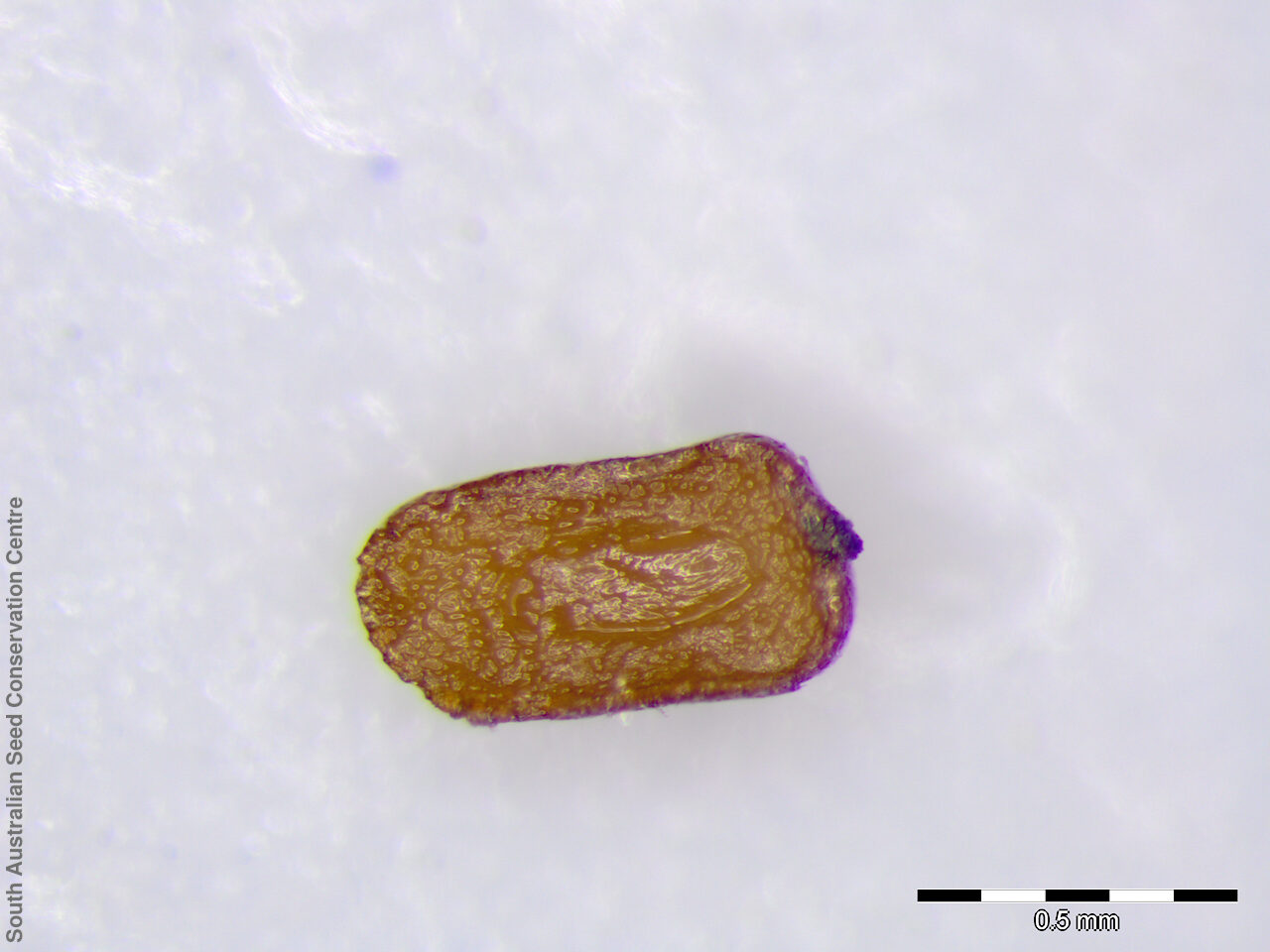
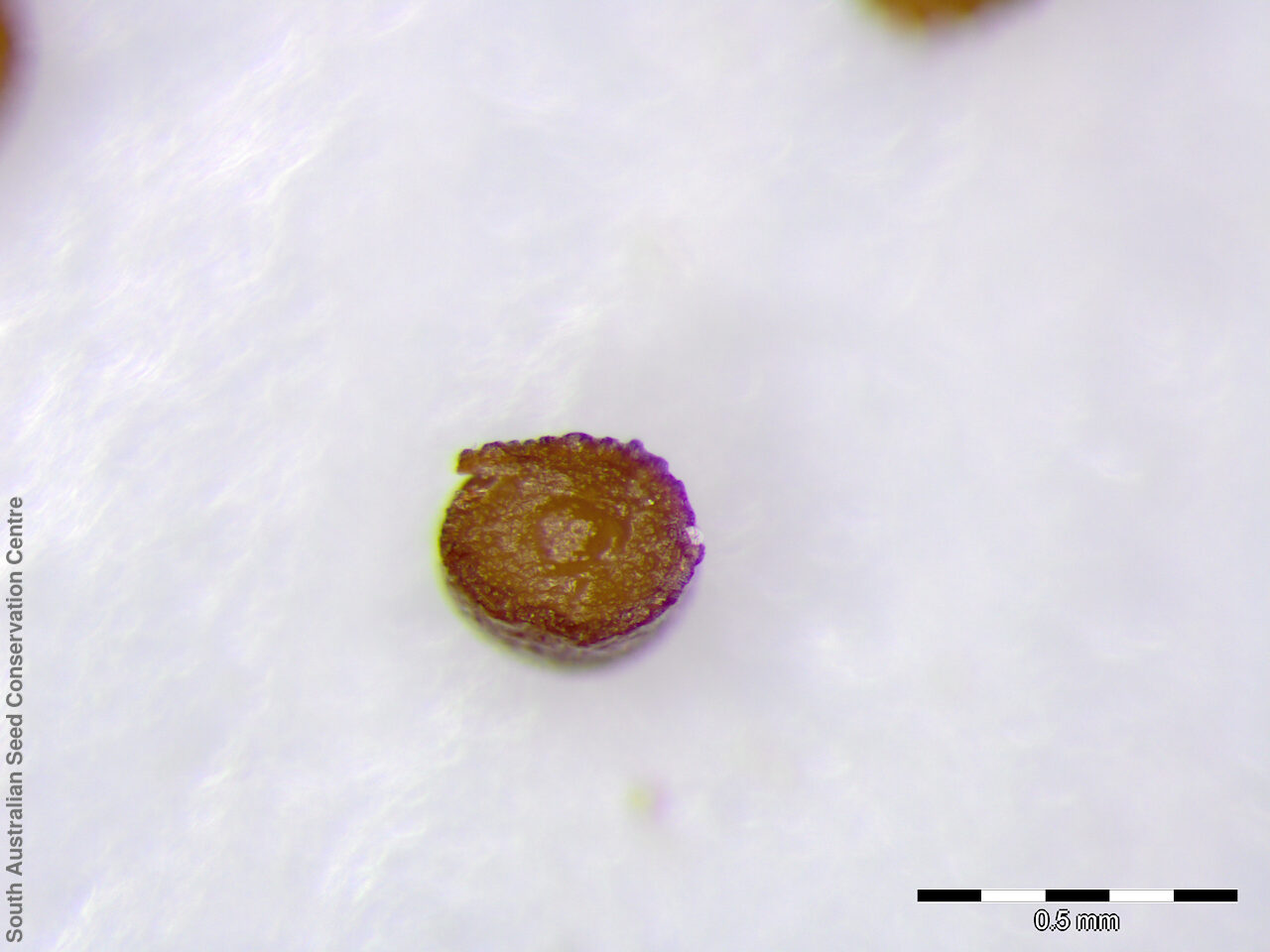


Botanical art
Prior names
Laurentia petraea
Common names
Rock Isotome
Tjuntiwari
Etymology
Isotoma from the Greek 'isos' meaning equal and 'tomos' meaning, a cutting; referring to the equally cut corolla lobes. Petraea from the Latin 'petraeus' meaning of rocky places; alluding to the species habitat on rocky outcrops.
Distribution and status
Hillsides and usually associated with rock outcrops. Found in the drier parts of South Australia, growing on hillsides associated with rock outcrops. Also found in Western Australia, Northern Territory, Queensland and New South Wales.
Herbarium regions: North Western, Lake Eyre, Gairdner-Torrens, Flinders Ranges, Eastern, Eyre Peninsula, Northern Lofty, Murray
AVH map: SA distribution map (external link)
Plant description
Perennial herbs with glabrous branches up to 40 cm long. Leaves with stalk on lower parts but usually stalk-less towards the apices of branches, oblanceolate to elliptic, to 75 mm long and 35 mm wide, acute, sharply lobed and with irregular teeth, glabrous. Flowers singularly in the axils of leaf-like bracts towards the ends of branches with white or tinged bluish purple flowers. Sepals shortly connate, the lobes linear-triangular, to 12 mm long, pointed, corolla with a slender tube to 20 mm long, pale-green, the lobes oblong-oblanceolate, to12 mm long, abruptly constricted into a point, white or more or less tinged a bluish purple, glabrous. Flowering between June and December. Fruits are papery brown cylindrical capsules, scarcely ridged, to 22 mm long. Seeds are reddish to dark brown cylindrical seed to 0.8 mm long and 0.4 mm wide, with a net-like reticulated surface. Seed embryo type is spatulate under-developed.
Seed collection and propagation
Collect seeds between September and February. Collect mature capsules, those that are turning a pale straw colour and contain brown seeds. Place the capsules in a tray and leave to dry for one weeks. Then rub the capsules gently by hand to dislodge the seeds. Use a sieve to separate the unwanted material. Be careful as the seeds are very small. Store the seeds with a desiccant such as dried silica beads or dry rice, in an air tight container in a cool and dry place. From one collection, the seed viability was high, at 100%.
| Location | No. of seeds (weight grams) | Number of plants | Date collected | Collection number Collection location | Date stored | % Viability | Storage temperature |
|---|---|---|---|---|---|---|---|
| BGA MSB | 25,000 (1.78 g) 25,000 (1.78 g) | 16 | 26-Oct-2004 | DJD30 Gairdner-Torrens | 28-Mar-2006 | 100% | -18°C |
Number of plants: This is the number of plants from which the seeds were collected.
Collection location: The Herbarium of South Australia's region name.
% Viability: Percentage of filled healthy seeds determined by a cut test or x-ray.